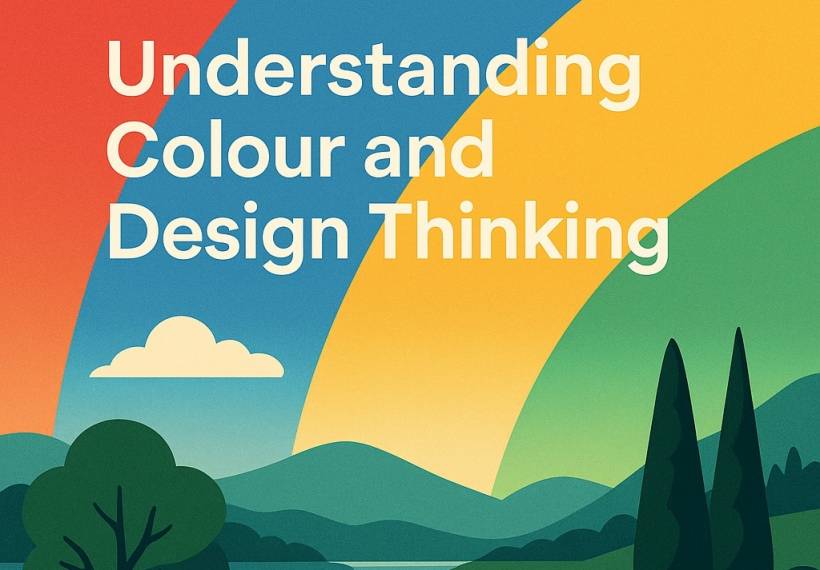Design isn't just about making things look good—it's about creating an experience that communicates, persuades, and connects with people. Two big ideas sit at the heart of design: Colour Theory and Colour Technical (the science of applying colour correctly) and Design Thinking (the mindset and process behind creating user-focused solutions).
Let's dive deeper into these concepts, break them down into practical insights, and look at real-world examples that show how they shape great design.
Colour Theory: More Than Just Picking Pretty Shades
Colour theory is the foundation of visual communication. It goes beyond choosing colours that "look nice" and explains why certain colours influence people's emotions, decisions, and perceptions.
Think about this:
In practice, colour can persuade a shopper to click, influence how trustworthy a brand feels, or create a sense of urgency in a campaign. Good designers know how to harness these psychological cues, but they also understand that colour perception can differ based on culture, personal experiences, and even accessibility considerations like colour blindness.
Colour Technical: The Science Behind the Palette
While colour theory looks at the emotional and psychological impact, colour technical focuses on the practical side—how colours are applied in different mediums. A design that looks perfect on your laptop may not print the same way on paper, and this is where technical knowledge matters.
Some key aspects include:
Example: Imagine designing a brand logo. On a website, the logo pops in bright, glowing shades of blue. But when printed on a brochure, the same blue looks dull because the printer couldn't reproduce the RGB vibrancy. That's why understanding colour technical is essential—it prevents expensive design mistakes.
Why Combining Theory and Technical Matters
A successful designer blends the psychology of colour theory with the science of colour technical. For example, when creating a health app:
Without this balance, even the best creative idea might fail when delivered to the real world.
Design Thinking: Putting People at the Heart of Design
While colour defines how a design feels, design thinking defines why the design exists in the first place. Often called human-centered design, it shifts the focus away from the designer's preferences and toward the people who will actually use the product or service.
The process is typically broken into five key stages—but these stages aren't always linear. Designers often loop back, revise, and test multiple times until the solution feels right.
1. Empathise: Stepping Into the User's Shoes
Design begins with empathy. A designer must understand who their users are, what frustrates them, and what excites them. For example, when creating a medical appointment app, empathy might reveal that elderly users struggle with complex interfaces, so the design must be simple and intuitive.
2. Define: Clarifying the Real Problem
Once empathy provides insights, the next step is defining the challenge. Is the problem that patients can't find available appointment slots, or is it that reminders aren't reaching them? A well-defined problem statement helps the design stay focused.
3. Ideate: Exploring Creative Solutions
This is where brainstorming happens. Designers sketch, mind-map, or digitally prototype multiple solutions. For our healthcare example, one idea might be colour-coded appointment slots, while another could be a chatbot assistant. No idea is too wild at this stage—the goal is quantity, not perfection.
4. Prototype: Bringing Ideas to Life
Prototypes turn ideas into something tangible. These don't have to be full-fledged products; even a clickable wireframe or a paper sketch can serve as a prototype. The purpose is to visualize how the solution might work.
5. Test: Learning From the Audience
Finally, prototypes are tested with the intended users. Feedback at this stage is gold—it highlights what works and what needs refining. For example, if patients find the chatbot confusing but love the colour-coded slots, the designer knows which direction to pursue.
Why Design Thinking Works
The beauty of design thinking lies in its flexibility. While empathy should always come first, the process allows for going back and forth between stages. If testing shows a flaw, designers revisit ideation or redefine the problem.
Companies like Apple and IDEO have famously applied design thinking to create products that feel intuitive and human-friendly. It's no accident that the iPhone became iconic—it wasn't just engineered; it was designed with people's needs and habits in mind.
Bringing It All Together
When you combine colour theory and colour technical with design thinking, you get designs that are not only beautiful but also meaningful and effective.
In short, great design is never just about aesthetics. It's a balance of psychology, science, and empathy—crafted with purpose and delivered with precision.




